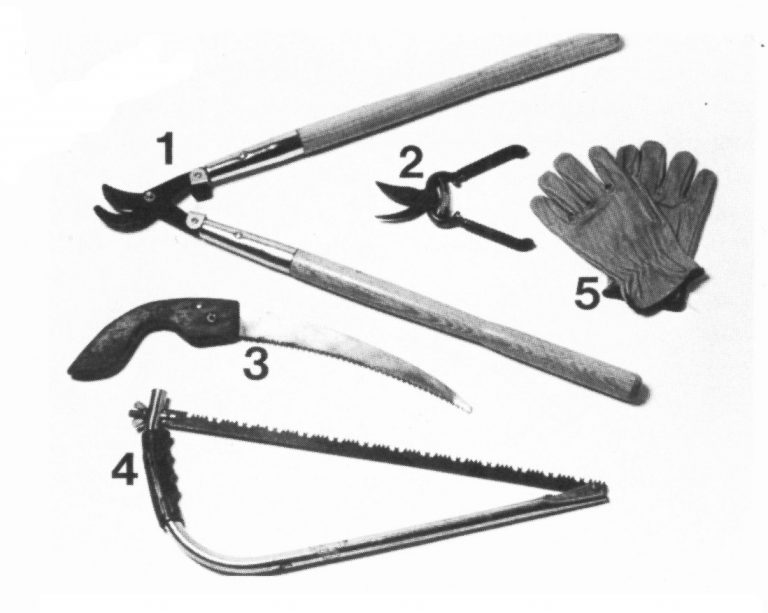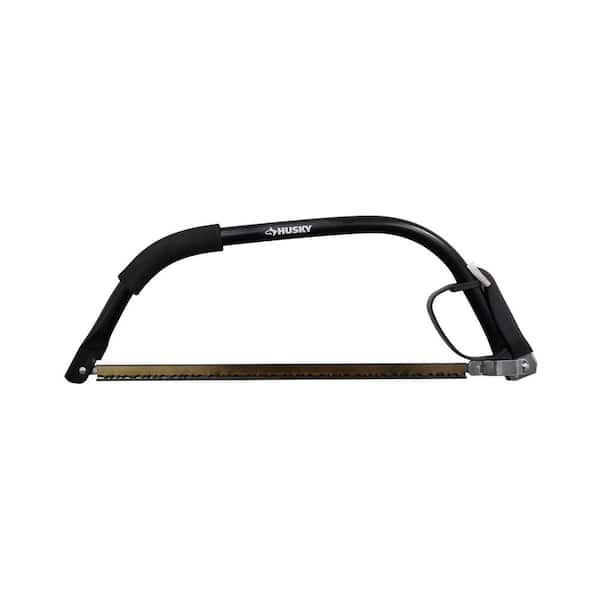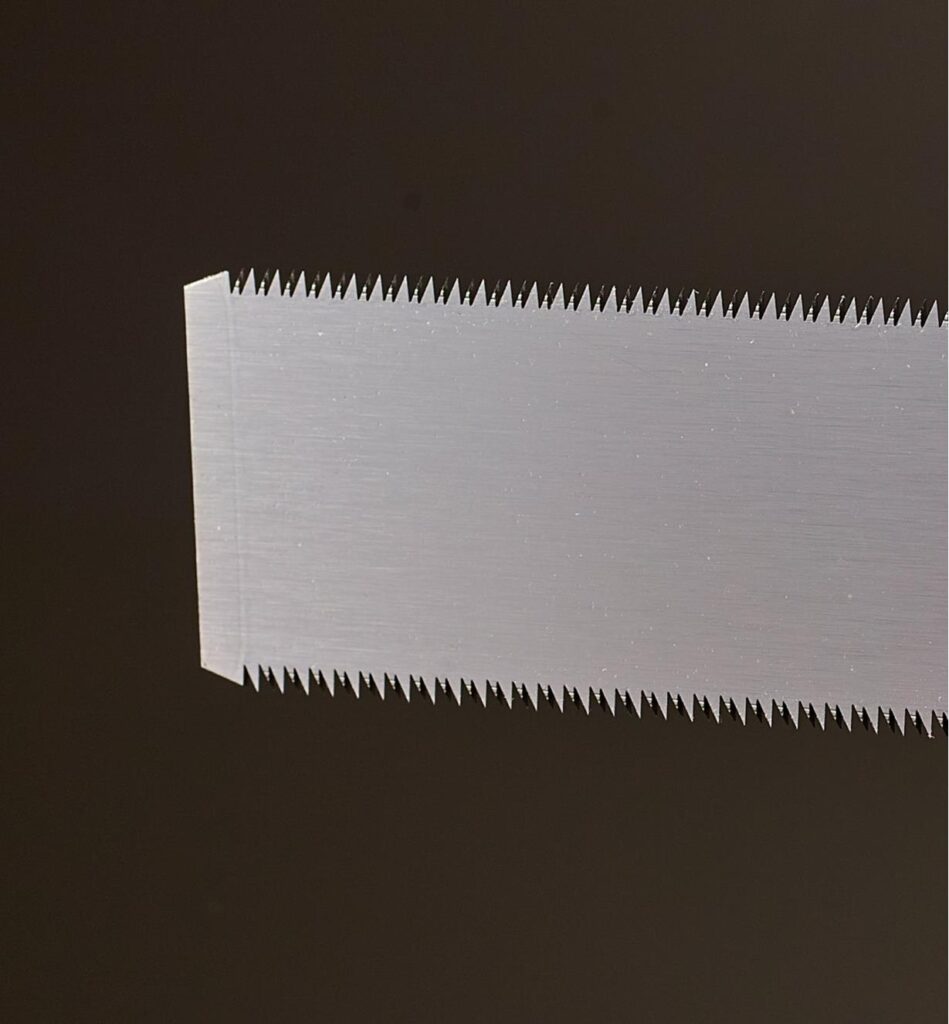Cutting a shrub flush with a bow saw is straightforward with the right steps. This task ensures your garden looks tidy and healthy.
Shrubs can grow unruly and spoil the beauty of your garden. Cutting them flush with a bow saw helps keep your space neat. The bow saw is a handy tool for this job. Its sharp blade makes cutting through thick branches easier.
With a few simple steps, you can trim your shrubs effectively. This guide will walk you through the process, ensuring a clean, flush cut. Ready to tackle those overgrown shrubs? Let’s get started!
Choosing The Right Bow Saw
Choosing the right bow saw is crucial for cutting shrubs efficiently. A good bow saw can make your task easier and safer. Consider two main factors: the blade type and the handle design. Both play a significant role in the saw’s performance.
Blade Types
Different blades serve different purposes. For cutting shrubs, you need a specific type of blade. Here are some options:
- Crosscut Blades: Ideal for cutting across the grain. These blades have alternating teeth designed to cut on both the push and pull strokes.
- Raker Blades: Best for green wood. The raker teeth help clear out sawdust, making the cutting process smoother.
- Pruning Blades: Specifically for pruning tasks. These blades are thinner and designed to make precise cuts without damaging the plant.
Choose a blade based on your specific needs. For cutting shrubs, a pruning blade often works best.
Handle Design
The handle design affects comfort and control. Consider these factors:
- Ergonomic Handles: These handles reduce strain on your hands. They are designed to fit the natural shape of your hand.
- Non-slip Grip: A non-slip grip ensures that you maintain control. This feature is especially important when your hands are sweaty or wet.
- Lightweight: A lightweight handle reduces fatigue. It allows you to work for longer periods without feeling tired.
Select a handle that offers comfort and control. Ergonomic designs with a non-slip grip are usually the best choice for cutting shrubs.

Credit: extension.okstate.edu
Safety Gear And Precautions
Ensuring safety while cutting a shrub flush with a bow saw is crucial. Proper safety gear and precautions can prevent injuries. This section will cover the essential equipment and safe cutting practices to follow.
Essential Equipment
Before you begin, gather the necessary safety gear:
- Safety glasses: Protects your eyes from debris.
- Gloves: Shields your hands from sharp branches and blisters.
- Long sleeves: Prevents scratches on your arms.
- Sturdy shoes: Provides stability and guards your feet.
Wearing the right gear reduces the risk of injury.
Safe Cutting Practices
Follow these safe cutting practices for a smooth and injury-free experience:
- Inspect the shrub: Check for any hazards or hidden objects.
- Plan your cuts: Decide where and how to cut for the best results.
- Secure the shrub: Hold the branches firmly to prevent movement.
- Use the bow saw properly: Apply even pressure and use both hands.
Adhering to these practices ensures a safe and efficient cutting process.
Preparing The Shrub
Before cutting a shrub with a bow saw, proper preparation is key. Ensuring the shrub and the surrounding area are ready will make the process smoother. Follow these simple steps to prepare the shrub effectively.
Identifying The Cut
First, identify where you want to cut the shrub. Look for the main stem or branch you wish to remove. Ensure the cut is flush with the ground or another main branch. This helps the shrub heal properly and maintain its shape.
Clearing Surrounding Area
Next, clear the area around the shrub. Remove any debris, leaves, or other plants that might obstruct your work. This ensures you have enough space to move the saw freely and safely. Check for any hidden obstacles like rocks or roots.
Also, ensure there are no people or pets nearby. This reduces the risk of accidents. Having a clean, open space around the shrub makes the cutting process easier and safer.

Credit: www.homedepot.com
Making The Initial Cuts
Making the initial cuts when using a bow saw is crucial. It sets the foundation for the entire trimming process. A good start ensures a clean, even cut.
Starting The Cut
Position the bow saw’s blade at the base of the shrub. Ensure the teeth face away from you. This setup provides better control. Begin with a slow, steady pull. Let the saw’s teeth bite into the wood. Avoid applying too much pressure. Allow the saw to do the work. Maintain a consistent motion. This helps create a smooth initial groove.
Maintaining Control
Keep a firm grip on the saw handle. Use both hands for stability. Stand in a comfortable, balanced stance. This prevents slipping. Focus on the saw’s alignment. Ensure it remains flush with the shrub’s base. Adjust your angle if needed. Consistent control leads to a cleaner cut.
Executing The Flush Cut
Learning how to cut a shrub flush with a bow saw can be rewarding. It ensures your garden looks neat and tidy. This section will guide you through the process step-by-step.
Angle And Technique
Start by positioning your saw at a 45-degree angle. This angle helps in achieving a smoother cut. Ensure you maintain this angle throughout the process.
Use long, steady strokes with the saw. Avoid rushing. Patience ensures a cleaner cut. Apply even pressure to prevent jagged edges.
Ensuring A Clean Finish
A clean finish is crucial for the health of the shrub. Make sure your bow saw is sharp. A dull saw can tear the plant tissue.
After completing the cut, inspect the area. Remove any loose or hanging bits. This helps the plant heal faster.
| Step | Description |
|---|---|
| 1 | Position the saw at a 45-degree angle. |
| 2 | Use long, steady strokes. |
| 3 | Apply even pressure. |
| 4 | Inspect and clean the cut area. |
Following these steps will ensure a smooth and clean flush cut. Your garden will thank you for the effort.

Credit: www.leevalley.com
Post-cut Care For Tools
Cutting a shrub flush with a bow saw requires precision. Make clean cuts close to the trunk. Keep tools sharp and clean for best results.
Cutting a shrub with a bow saw can be satisfying and efficient. But, it’s crucial to care for your tools after the job. Proper tool maintenance ensures longevity and peak performance. Post-cut care involves cleaning and sharpening your saw.Cleaning The Saw
After cutting a shrub, debris clings to the saw. Remove any stuck leaves and branches by hand. Use a stiff brush to scrub away dirt and sap. For stubborn residue, a cloth dipped in soapy water can help. Rinse the saw with clean water and dry it thoroughly. Moisture can cause rust, damaging the blade.Sharpening The Blade
A sharp blade makes cutting easier and safer. Inspect the saw teeth for dullness. Use a file to sharpen each tooth. File in one direction, maintaining the original angle. Ensure each tooth is the same height for even cutting. Regular sharpening keeps your saw ready for the next task.Disposing Of Cut Shrub
After cutting a shrub flush with a bow saw, proper disposal is key. Disposing of the cut shrub correctly helps keep your yard tidy and can benefit the environment. There are a few ways to handle the disposal process.
Composting Options
Composting is an eco-friendly way to dispose of shrub cuttings. You can turn shrub debris into nutrient-rich compost. This compost can help your garden thrive.
Start by cutting large branches into smaller pieces. Smaller pieces decompose faster. Mix the shrub pieces with other compost materials. Add kitchen scraps, leaves, and grass clippings. This helps balance the compost pile.
Turn the compost pile regularly. This aerates the pile and speeds up decomposition. In a few months, you’ll have rich compost for your plants.
Waste Management
If composting is not an option, consider waste management services. Many areas have yard waste pickup. Check with your local waste management company. They may offer special bags or bins for yard waste.
Place the shrub cuttings in the designated bags or bins. Make sure to follow any guidelines. This ensures the waste is collected and processed properly.
Another option is taking the cuttings to a local landfill or recycling center. Some centers have areas for yard waste. They may turn the waste into mulch or compost.
Common Mistakes To Avoid
Avoid cutting the shrub too high or low with a bow saw. Ensure the saw blade is sharp and clean. Always cut straight and avoid uneven edges for a neat finish.
Cutting a shrub flush with a bow saw may seem simple. But many people make common mistakes. These mistakes can harm the shrub and the person cutting it. Let’s explore these mistakes and how to avoid them.Incorrect Blade Usage
Using the wrong blade can cause problems. A dull blade can make cutting difficult. It can also damage the shrub. Always use a sharp blade for a clean cut. A blade that is too small can be dangerous. It can slip and cause injury. Ensure the blade size matches the shrub size. Clean the blade before use. This removes any dirt or rust.Ignoring Safety Protocols
Safety is very important when cutting shrubs. Always wear gloves to protect your hands. Eye protection is also necessary to keep debris out of your eyes. Never cut towards your body. This can lead to serious injury. Keep a firm grip on the saw. This prevents slips and accidents. Wear sturdy shoes for good footing. This helps you stay balanced while cutting. Check your surroundings for any obstacles. Remove anything that may cause you to trip. Avoid cutting in poor light. Good visibility ensures you make precise cuts. “`Frequently Asked Questions
How Do You Cut A Shrub With A Bow Saw?
To cut a shrub, ensure your bow saw is sharp. Position the saw at the shrub’s base. Use steady, controlled strokes.
What Safety Gear Is Needed For Cutting Shrubs?
Wear safety gloves and goggles. Long sleeves and pants are recommended. Ensure your work area is clear of obstructions.
Can You Use A Bow Saw On Thick Shrubs?
Yes, a bow saw can handle thick shrubs. Ensure the blade is sharp. Use slow, steady strokes for best results.
How To Maintain A Bow Saw?
Regularly clean the blade after use. Sharpen it periodically. Store in a dry place to prevent rust.
Conclusion
Cutting a shrub flush with a bow saw is simple and effective. Always use sharp, clean tools. Follow safety guidelines to avoid injuries. Practice makes perfect. With time, your skills will improve. Your garden will look neat and well-kept. Remember to dispose of cut branches properly.
Enjoy the process and the results. Gardening can be relaxing and rewarding. Happy trimming!
